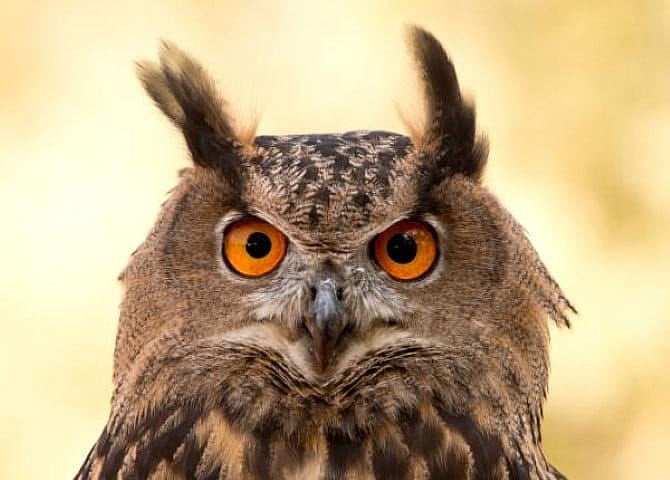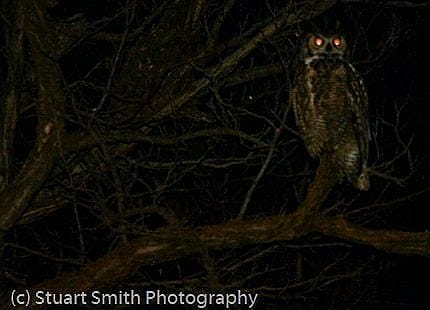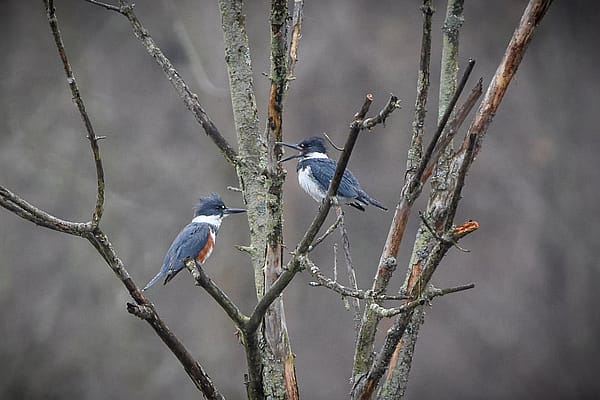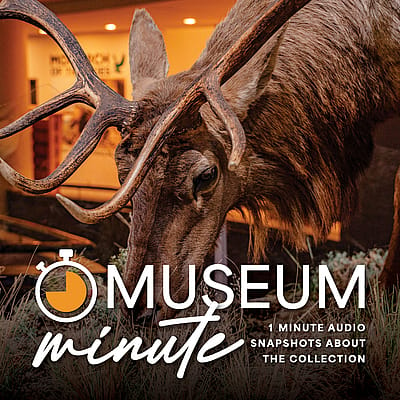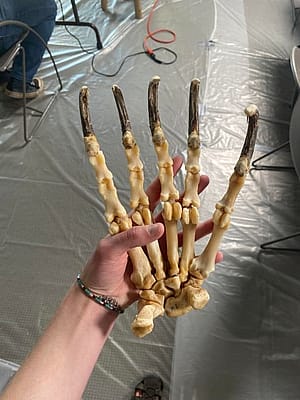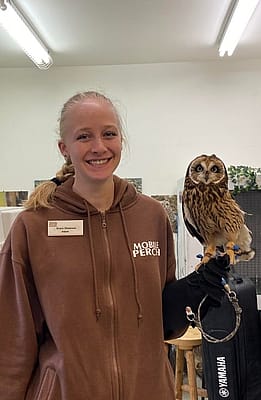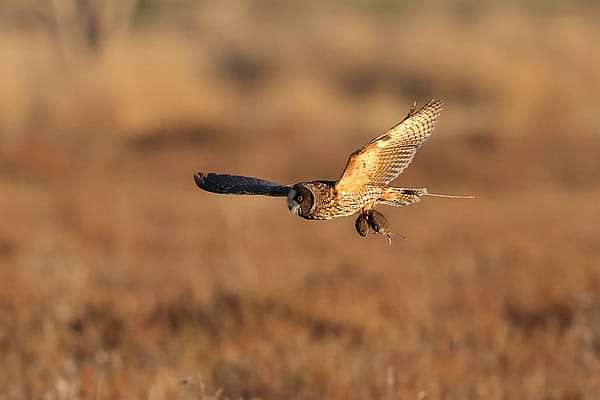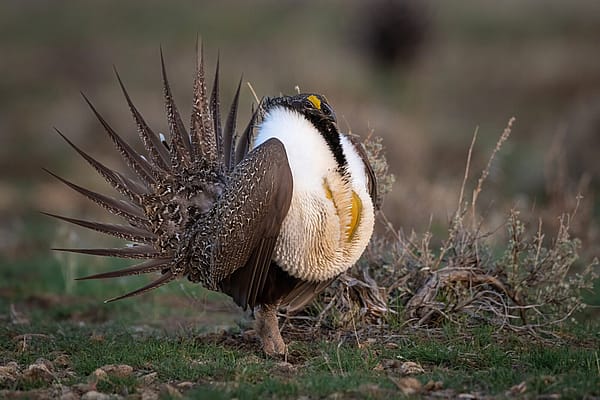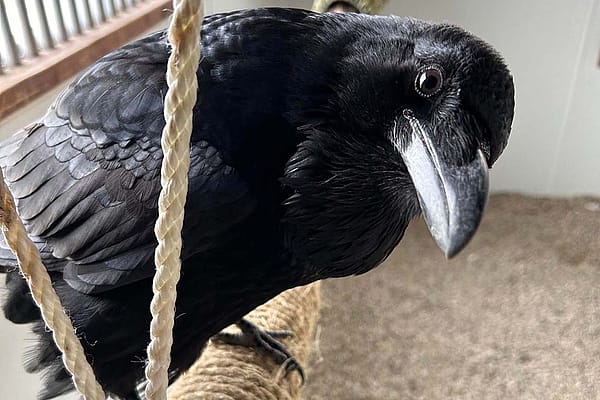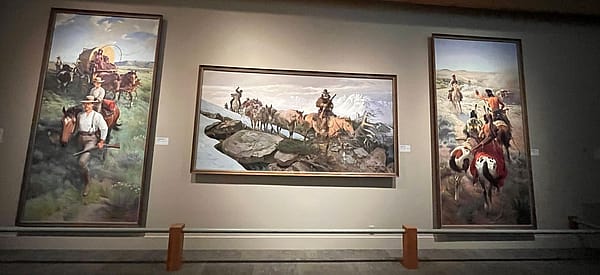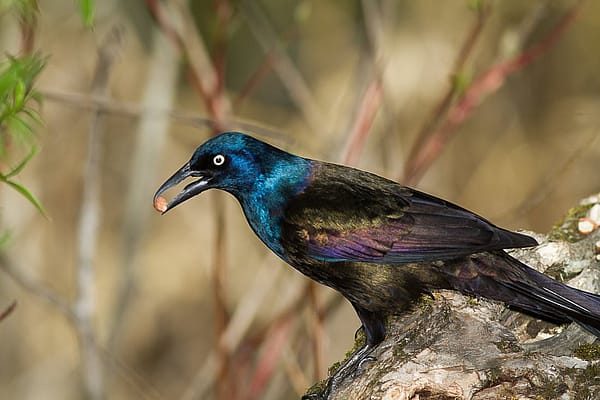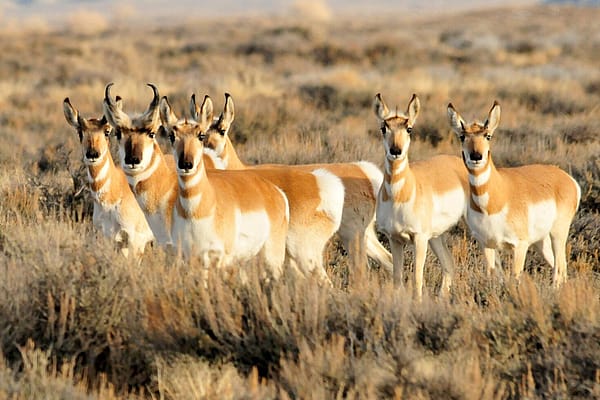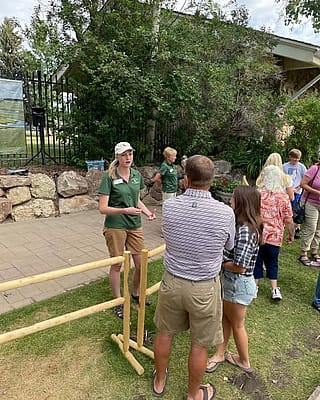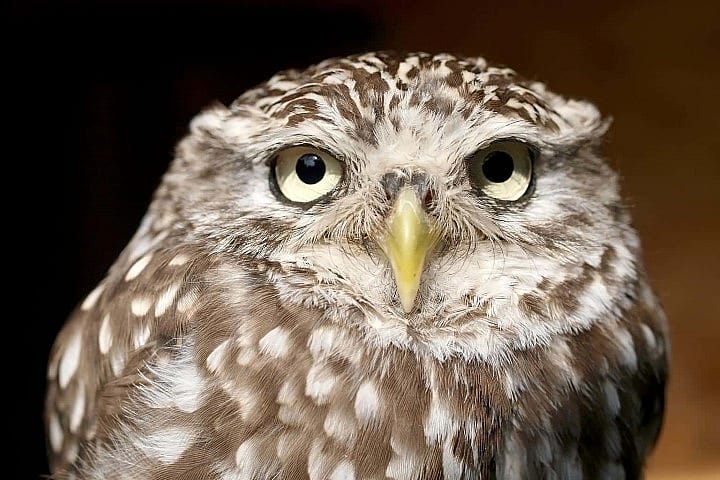
It’s hard to hide from an owl! Part 1: The Eyes
Hello everyone! This is Katie, and I am back for the summer! I am super excited to be working with our birds (old & new) and with our amazing volunteers once again (and Melissa and Brandon, of course)! I am going to try to help with the blogs again this summer (although we are already almost two months in – I am running behind)! Anne has some amazing posts, so I will try to keep up with her!
Ok, now back to the subject at hand: Owls! We have done many posts about them but there is always so much more to talk about! Our raptors always fascinate me and owls in particular have some incredible ways to hunt and catch their prey. Depending on their habitat, owls hunting styles vary and they may hunt with their eyes or their ears or both. As most people know, many owls are nocturnal (nighttime hunters) but there is a lot of variety in this group: some species are diurnal (daytime hunters), while others are crepuscular, preferring early morning and late evening conditions. Whatever time they go hunting, owls all use their eyes and ears to go hunting. Today, let’s look a bit closer at those amazing eyes.
One of the first things people notice about owls are their eyes: they are huge for their body size, sometimes bright and colorful, and are staring right into your soul…. Their eyes are so large they take up more than half of the space in their skull! If an owl were stretched out to human size, the eyes would be the size of grapefruits. Why do they need such big eyes? Large eyes provide more surface area for sensing light; owls have tons of rods (those cells in our eyes that sense light), so big eyes + tons of rods = amazing night vision. It is estimated that their night vision is anywhere from 35-100 times better than our! Not only that, but owls can see great in the day time too – each pupil can dilate independently of the other and each has great control of how much light is let in, making them able to see in every light level.
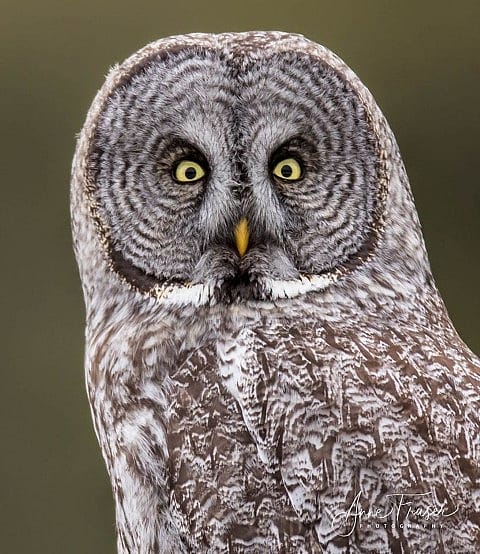
Additionally, their eyes are the most forward facing of any bird, giving them the best depth perception – that is partially why their faces appear to be so flat! Have you ever walked around with one eye covered? You probably found yourself bumping into random objects because you could not quite tell how far away they were. That is why those forward facing eyes and great depth perception are so important for owls. You definitely would not want to hit your wings on the trees as you are flying and you want to be able to catch your food the first time you try!
Furthermore, have you ever noticed an animal’s eyes kind of ‘glow in the dark’ when you flash a light at them? This is because they, and most other animals that have good night vision, have what are called “tapetum lucidum.” These are reflective layers that sit behind the retina. Their job is to re-emit the light back onto the retinas (basically they are kind of like mirrors, doubling the chance of light hitting the rods).
Finally, can owls see in color? Most of the nocturnal owls have very few cones (those cells that sense color) in their eyes -they don’t really need to sense color at night. Diurnal owls, like the Short-Eared Owl, spend their days hunting and so have better color vision that helps them catch their food when there is enough light for color to make a difference!
Anyone’s mind blown yet? “But wait, there’s more!” In fact, there’s so much more fascinating information about how owls hunt that we will break it into a few different posts. Tune in next week and we will talk about their excellent ears!
References
Lynch, Wayne. Owls of the United States and Canada: A Complete Guide to Their Biology and Behavior. JHU Press, Nov 7, 2007
http://www.owls.org/public/4-eye-sight
https://www.ebiomedia.com/how-do-animals-see-in-the-dark.html
Written By
Melissa Hill
While earning her Bachelor's Degree in Wildlife Management at the University of Wyoming, Melissa began volunteering at Laramie Raptor Refuge and was instantly hooked on birds of prey. Since those early days, she has worked with nearly 70 different raptors at four different raptor education groups in three states. She is a former member of the Education Committee for the International Association of Avian Trainers and Educators (IAATE) and a National Association for Interpretation's Certified Interpretive Guide. When she's not "playing with the birds" she enjoys spending time quilting, crocheting, and exploring the Greater Yellowstone Ecosystem with her non-bird family.
